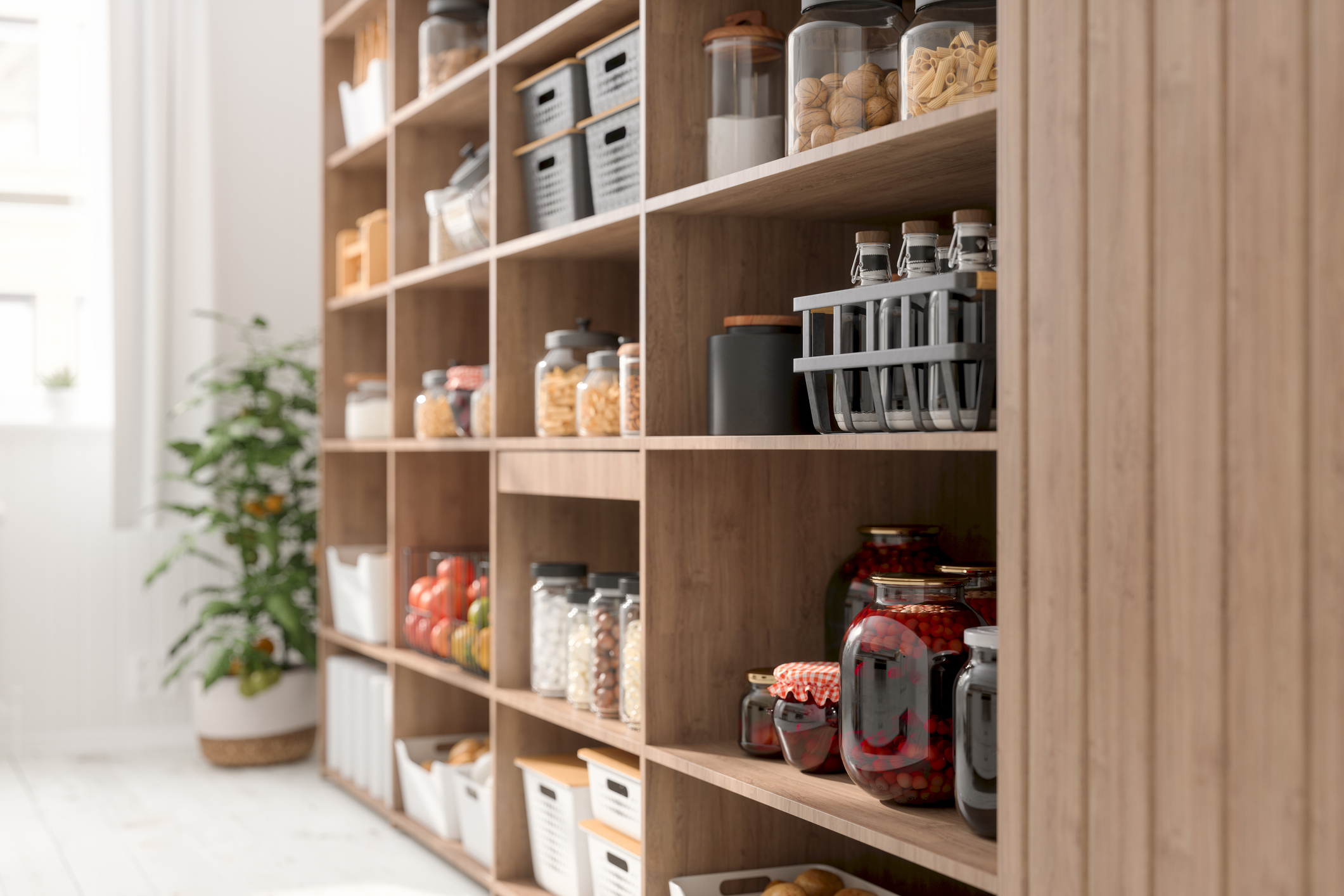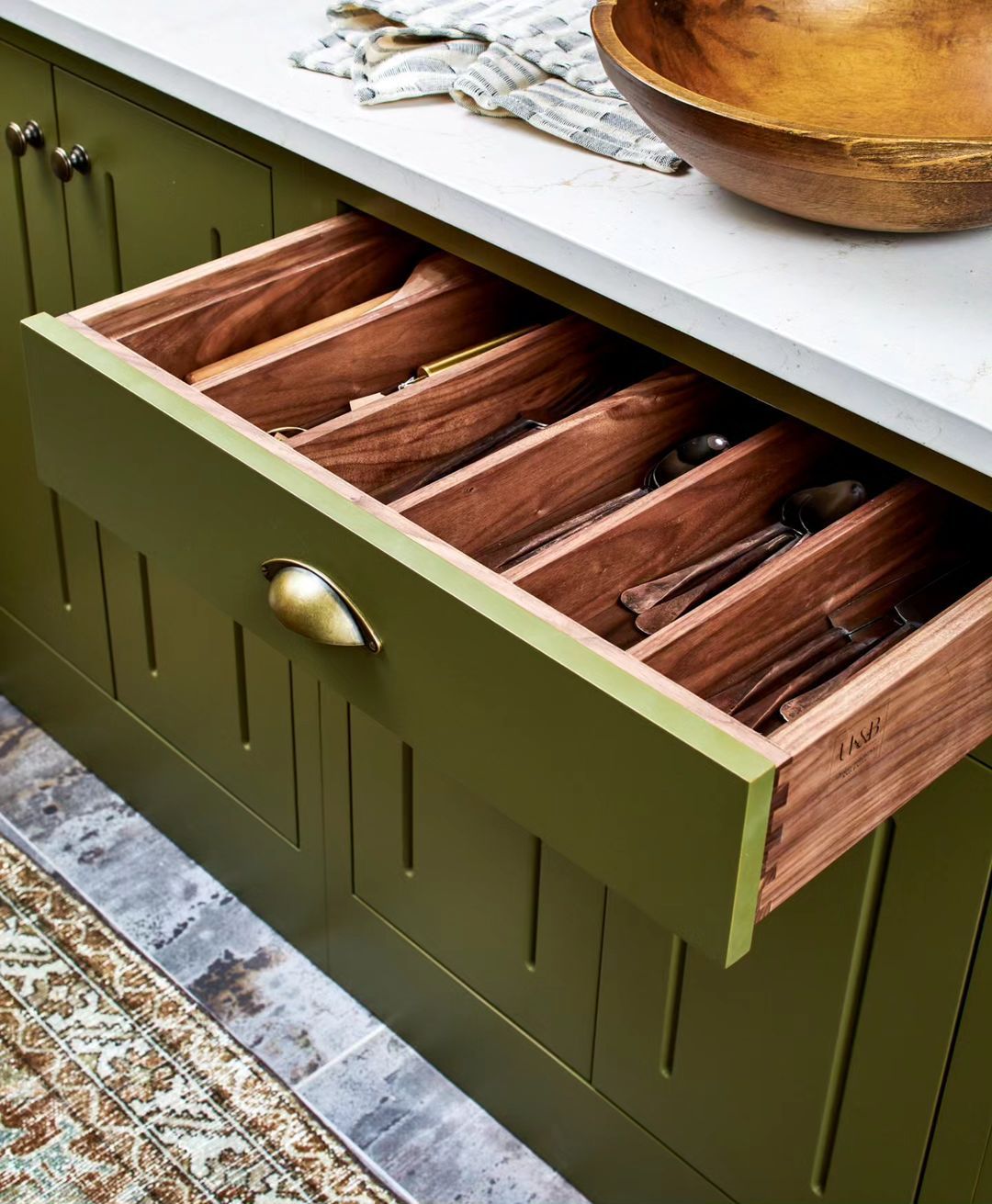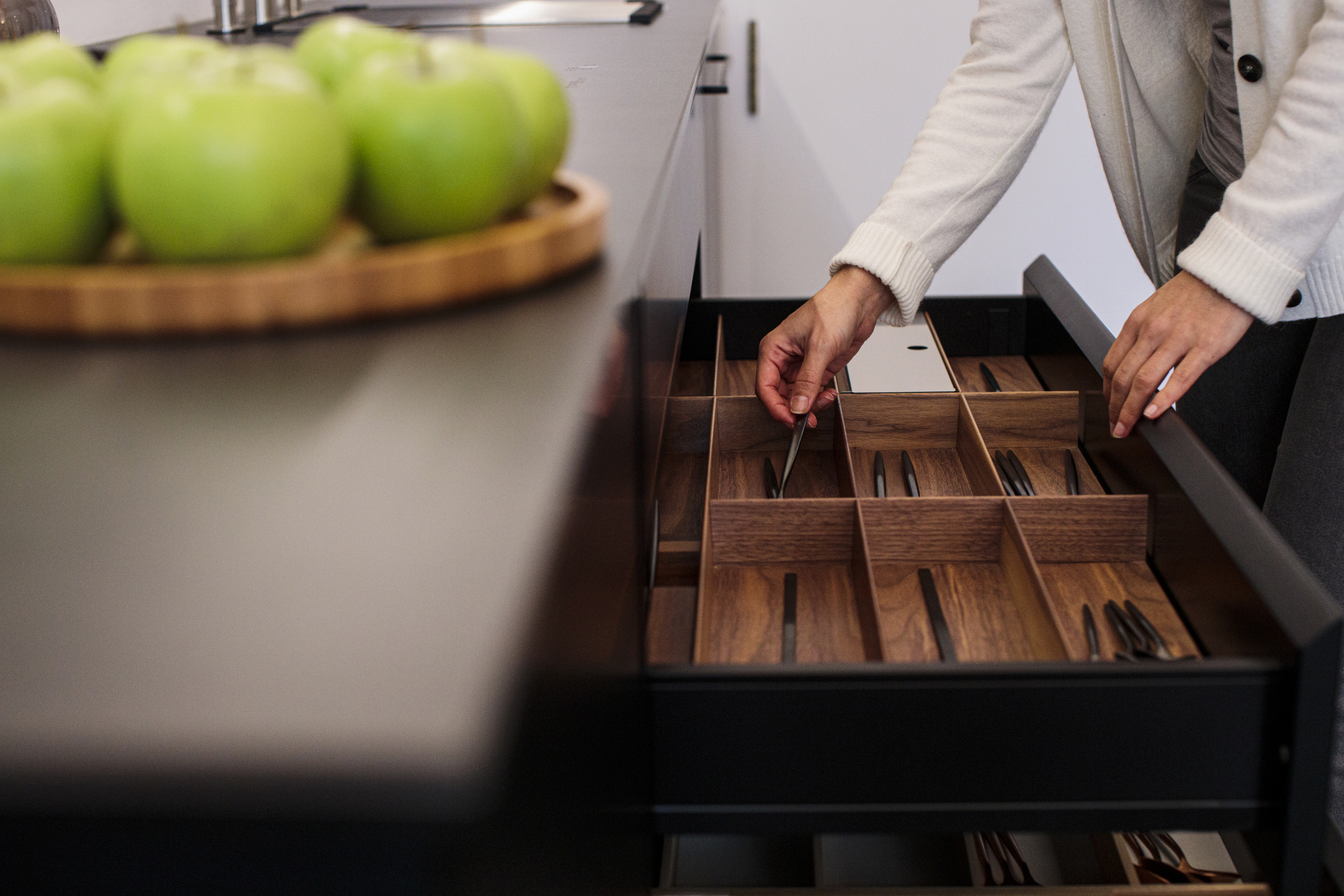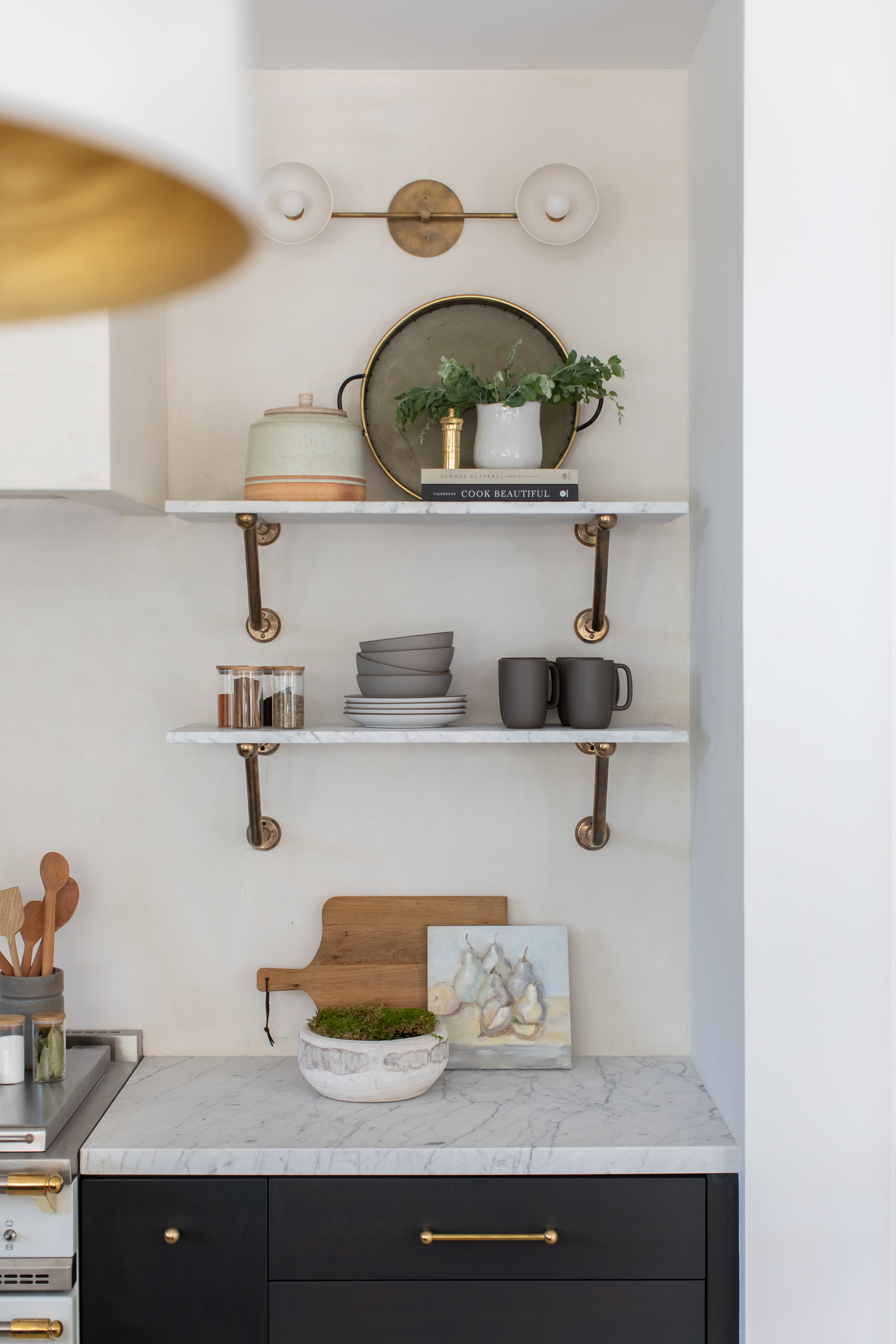
There is a dreaded drawer in every kitchen, the one that is overflowing with takeout menus, once-used appliances, and all your other countertop clutter without a permanent home.
It's time to take control of your kitchen and create a space in which everything has its proper place. Our experts share their top tips for creating order in your cabinets, to better figure out how to organize a kitchen. You'll never find yourself rummaging around for a lemon juicer again.
1. Make it personal

Our eating and cooking habits are all uniquely personal and, when it comes to how to organize kitchen drawers, your set-up should reflect this argues professional organizer Sara Berieka.
'When organizing a kitchen, I use personal behavior and proximity to group items effectively. This requires me to take into account the most commonly performed tasks in each kitchen. It’s not the same for everyone. Some people hate to cook and use the microwave most. Some love smoothies or coffee. Some have small children who love their snacks. Therefore, it's important to determine the most efficient and ideal space for each task and group items accordingly.'
She takes note of the most commonly used appliances and organises around this: 'I prefer to keep my everyday dishes, silverware, mugs, and glasses closest to the dishwasher. I group these items to make them fit near the dishwasher.'
'Another example is the prep zone where you prepare food for dinner,' she says. 'It is important to consider all the items you need to prep your meals, including knives, cutting boards, spices, and large bowls. These items should be stored together in proximity to the area where food prep occurs.'
Adjusting your storage to suit your habits is another effective tool: 'If you bake, gather all the items required for baking and store them together' says Sara. 'However, since baking may not be done regularly, these items can be stored in secondary cabinets. When storing items that are not frequently used, accessibility is an important factor to consider. They do not need to occupy prime real estate in the kitchen.'
2. Use Inserts to Guide Placement

Drawer dividers and inserts are an easy way to create a bit more structure and order in your kitchen cabinets. Separating your drawers into distinct categories offers a strict visual guideline to follow, preventing overflow and mess.
Charlotte Sitton, founder of Organised by Charlotte, recommends drawers dividers to 'help keep items in their place, from food to plastic containers you can keep items categorized.'
She suggests drawer inserts (like these from Wayfair) as 'the best way to keep the 'bits and bobs' drawers in check.'
Sara Bereika agrees, saying: 'I always make sure to include drawer organizers when I am organizing a kitchen. I prefer using bamboo organizers since they are environmentally friendly. Every utensil and gadget has its own designated spot, ensuring everything is visible and easy to put away quickly.'
If you're wanting to introduce some structure to your drawers on a budget, Charlotte Sitton has a helpful hack. 'Why not use plastic containers to store lids, or food boxes as drawer inserts, if it fits you can really be creative with finding items to help you keep organized!'
3. Know the spots for pots

Pots and pans are some of the biggest space-stealers in the kitchen cabinet, and storing them in an accessible and organized way can often feel like an impossible task.
'It's all depending on size, but I find larger serveware and heavy cookware are much better on shelves' suggests Charlotte Sitton.
For Sara Bereika, a pot lid organizer is a 'must-have' for pan storage. 'I recommend the expandable one from IKEA' she says, 'which can fit into most drawers and accommodate lids or pots of various sizes.' You can also find a similar expandable pot lid organizer from Amazon.
4. Shelf savers

When you are trying to make the most of your kitchen storage, identifying which items should find their spot on a shelf, and which should be tucked away in a drawer can feel like a crucial decision. Charlotte Sitton has a few rules to follow to simplify the process: 'snacks, food, and things like aluminum foil are much better in a drawer' she says, 'jars and containers are easier to see on shelves.'
If creating and maintaining order on your shelves is an issue for you, Sara Bereika's tip may save you: 'I frequently use turn tables in upper cabinets to keep spices, soy sauce, oil, and vinegar organized.'
And for the pesky additional bits that won't fit in your drawer, Sara Berieka has another solution: 'I keep a canister on the countertop to store big spatulas, spoons, and ladles that don't fit in a drawer. This makes them easily accessible while cooking.'







